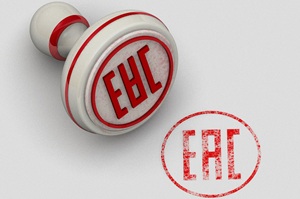Russian customs regulations guide for efficient international trade in EAC

Customs Clearance Procedures in EAC
Understanding customs clearance procedures in the Eurasian Economic Union (EAC) is crucial for businesses involved in international trade. The EAC consists of several member countries, including Russia, Belarus, Kazakhstan, Armenia, and Kyrgyzstan, which have established a unified customs space to facilitate trade while ensuring compliance with regulatory frameworks. Successful navigation through Russian customs regulations is essential for exporters and importers alike, allowing them to efficiently bring goods across borders.
Overview of Customs Clearance
Customs clearance is the process of obtaining permission from the customs authorities to import or export goods. It involves the submission of specific documents, payment of duties and taxes, and adherence to laws and regulations. Each country within the EAC has its customs procedures, but they generally follow similar principles. Businesses must ensure that all documentation is adequately prepared to avoid delays that can lead to increased costs. The customs clearance process typically includes the following key steps:
- Preparation of shipping documents
- Filing of the customs declaration
- Payment of applicable duties and taxes
- Inspection of goods
- Release of goods from customs
Documentation Required for Customs Clearance
To clear goods through customs in the EAC, several specific documents are required. These include, but are not limited to, the following:
- Bill of Lading: This document serves as a receipt for the transportation of goods and shows the terms and conditions under which goods are carried.
- Commercial Invoice: An invoice that provides details about the transaction, including descriptions of the goods, their value, and the terms of sale.
- Customs Declaration: This is a standard form used to report details to the customs authorities for the import or export of goods.
- Certificates of Origin: These certificates serve to confirm where the goods have been manufactured and can affect the duties applied.
- Transport Documents: Documents provided by carriers that verify the shipment of goods.
Customs Procedures for Import and Export
When importing goods into EAC member countries, customs procedures involve several steps aimed at ensuring that all regulations are met. Importers must complete Russian customs documentation and pay any applicable import duties and taxes based on the classification of their goods. In addition, customs may conduct physical inspections of the goods to ensure compliance with safety and quality standards.
For exports, businesses also must adhere to stringent customs procedures, including accurate documentation. Exporters must ensure that their goods comply with the importing country’s regulations to avoid rejections or penalties. Depending on the nature of the goods, additional export controls or licenses may also be required.
Challenges in Customs Clearance
Businesses often face various challenges when navigating customs clearance in the EAC. These challenges can include:
- Changing Regulations: Customs regulations are subject to change, making it challenging for businesses to stay updated and compliant.
- Complex Documentation: The documentation requirements can be extensive, requiring careful attention to detail to avoid errors that may delay clearance.
- Risk of Inspections: Customs authorities may select shipments for inspection, which can lead to delays and additional costs.
Understanding these challenges allows businesses to implement strategies to mitigate risks and streamline the customs clearance process effectively.
Conclusion
Navigating customs clearance procedures in the EAC is a vital aspect of international trade. Businesses that prepare adequately can avoid delays and ensure smooth transactions. By being aware of the necessary documentation and potential challenges, companies can engage in processes that enhance efficiency and compliance, making the most of trade opportunities within and outside the EAC.
